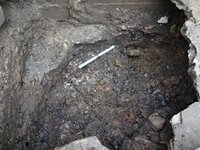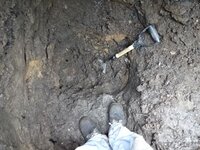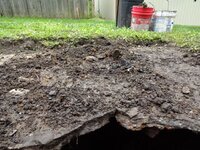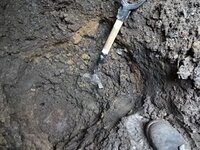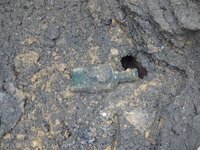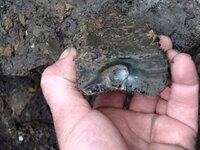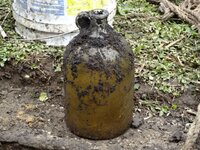Helix
Bronze Member
- Jul 27, 2013
- 1,425
- 1,315
- Detector(s) used
- Garrett gti 2500, Whites DFX
- Primary Interest:
- All Treasure Hunting
So I got permission yesterday to metal detect a yard on 1840s house... Nothing but trash but this caught my attention... Looks like a privy...  full of goodies! Ok I will let the pictures do the talking. Have you note this was the richest town in Indiana during the 1840s....
full of goodies! Ok I will let the pictures do the talking. Have you note this was the richest town in Indiana during the 1840s....
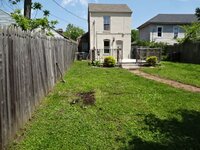
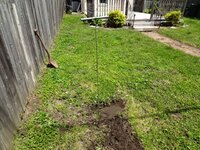
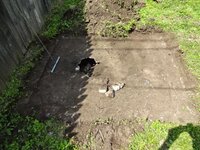
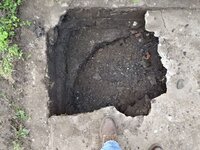 You can clearly see the original cut stone, where it goes from modern concrete to cut stone and round... So I would say this is a good find for the day... just my 2 cents.... I will dig later some time.
You can clearly see the original cut stone, where it goes from modern concrete to cut stone and round... So I would say this is a good find for the day... just my 2 cents.... I will dig later some time.
 full of goodies! Ok I will let the pictures do the talking. Have you note this was the richest town in Indiana during the 1840s....
full of goodies! Ok I will let the pictures do the talking. Have you note this was the richest town in Indiana during the 1840s....



 You can clearly see the original cut stone, where it goes from modern concrete to cut stone and round... So I would say this is a good find for the day... just my 2 cents.... I will dig later some time.
You can clearly see the original cut stone, where it goes from modern concrete to cut stone and round... So I would say this is a good find for the day... just my 2 cents.... I will dig later some time.
Upvote
8



